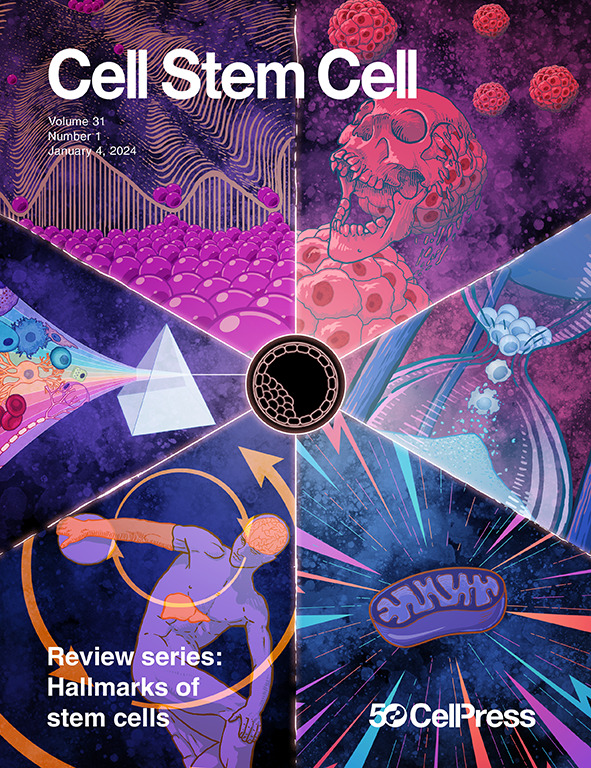利用ipsc衍生的脊髓运动神经元和一体化血脑样屏障建立散发性ALS器官芯片模型
IF 20.4
1区 医学
Q1 CELL & TISSUE ENGINEERING
引用次数: 0
摘要
肌萎缩性侧索硬化症(ALS)是一种致命的神经退行性疾病,其中大脑和脊髓的运动神经元(MNs)退化,导致瘫痪。从患者特异性诱导多能干细胞(iPSCs)产生MNs可能有助于阐明疾病的早期阶段。在这里,我们将来自早发性疾病患者的MNs与脑微血管内皮样细胞结合在我们称为脊髓芯片(SC-chips)的微流体装置中,并添加介质流,从而促进神经元成熟并改善细胞健康。sc芯片的大量转录组学和蛋白质组学分析揭示了对照组和ALS样本之间的差异,包括神经丝水平的增加。单核RNA测序显示存在两个MN亚群和als特异性谷氨酸能和突触信号的失调。这种ALS sc芯片模型产生了多种成熟的MNs,以更好地了解ALS病理,该模型具有活跃的血脑屏障样系统,可用于未来的药物筛选。本文章由计算机程序翻译,如有差异,请以英文原文为准。

An organ-chip model of sporadic ALS using iPSC-derived spinal cord motor neurons and an integrated blood-brain-like barrier
Amyotrophic lateral sclerosis (ALS) is a fatal neurodegenerative disorder in which motor neurons (MNs) of the brain and spinal cord degenerate, leading to paralysis. Generating MNs from patient-specific induced pluripotent stem cells (iPSCs) may help elucidate early stages of disease. Here, we combined MNs from patients with early-onset disease with brain microvascular endothelial-like cells in a microfluidic device we termed spinal cord chips (SC-chips) and added media flow, which enhanced neuronal maturation and improved cellular health. Bulk transcriptomic and proteomic analyses of SC-chips revealed differences between control and ALS samples, including increased levels of neurofilaments. Single-nuclei RNA sequencing revealed the presence of two MN subpopulations and an ALS-specific dysregulation of glutamatergic and synaptic signaling. This ALS SC-chip model generates a diversity of mature MNs to better understand ALS pathology in a model that has an active blood-brain barrier-like system for future drug screening.
求助全文
通过发布文献求助,成功后即可免费获取论文全文。
去求助
来源期刊

Cell stem cell
生物-细胞生物学
CiteScore
37.10
自引率
2.50%
发文量
151
审稿时长
42 days
期刊介绍:
Cell Stem Cell is a comprehensive journal covering the entire spectrum of stem cell biology. It encompasses various topics, including embryonic stem cells, pluripotency, germline stem cells, tissue-specific stem cells, differentiation, epigenetics, genomics, cancer stem cells, stem cell niches, disease models, nuclear transfer technology, bioengineering, drug discovery, in vivo imaging, therapeutic applications, regenerative medicine, clinical insights, research policies, ethical considerations, and technical innovations. The journal welcomes studies from any model system providing insights into stem cell biology, with a focus on human stem cells. It publishes research reports of significant importance, along with review and analysis articles covering diverse aspects of stem cell research.
 求助内容:
求助内容: 应助结果提醒方式:
应助结果提醒方式:


